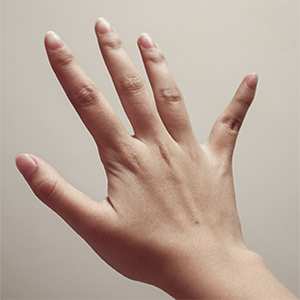Nailfold capillaroscopy in the rheumatological current clinical practice in Italy: results of a national survey

Submitted: 3 July 2022
Accepted: 27 September 2022
Published: 29 December 2022
Accepted: 27 September 2022
Abstract Views: 762
PDF: 312
Appendix: 720
Appendix: 720
Publisher's note
All claims expressed in this article are solely those of the authors and do not necessarily represent those of their affiliated organizations, or those of the publisher, the editors and the reviewers. Any product that may be evaluated in this article or claim that may be made by its manufacturer is not guaranteed or endorsed by the publisher.
All claims expressed in this article are solely those of the authors and do not necessarily represent those of their affiliated organizations, or those of the publisher, the editors and the reviewers. Any product that may be evaluated in this article or claim that may be made by its manufacturer is not guaranteed or endorsed by the publisher.
Similar Articles
- R. El-Beheidy, A.M. Domouky, H. Zidan, Y.A. Amer, Serum KL-6 as predictive and prognostic marker of interstitial lung disease in childhood connective tissue diseases: a pilot study , Reumatismo: Vol. 73 No. 3 (2021)
- C. Lubatti, F. Ingegnoli, R. Gualtierotti, P. Boracchi, L. Zahalkova, S. Zeni, A. Soldi, F. Fantini, Nailfold capillaroscopic report: qualitative and quantitative methods , Reumatismo: Vol. 60 No. 4 (2008)
- G. Castellino, A. Protti, B. Canesi, Multiple Sclerosis and autoimmune diseases: clinical cases and review of the literature , Reumatismo: Vol. 53 No. 3 (2001)
- L. Breviglieri, F. Zizzi, P. Rocchi, G. Frascà, G. D’Arcangelo, C. Rimondi, L. Frizziero, Relapsing polycondritis associated with microscopic polyangiitis: description of a clinical case , Reumatismo: Vol. 53 No. 2 (2001)
- H.K. Aggarwal, D. Jain, A. Mittal, G. Dabas, Isolated oculocutaneous sarcoidosis in a teenage male: a rare case report , Reumatismo: Vol. 68 No. 2 (2016)
- A.C.C.D. Baccaro, G.L. Behrens Pinto, R.C.S. Carboni, S.K. Shinjo, The clinical manifestations at the onset of antisynthetase syndrome: A chameleon with multiple faces , Reumatismo: Vol. 72 No. 2 (2020)
- M. Rampudda, P. Marson, G. Pasero, The main stages in the history of systemic lupus erythematosus , Reumatismo: Vol. 61 No. 2 (2009)
- R. Scolozzi, A. Boccafogli, L. Vicentini, Hyper-IgD syndrome and hereditary periodic fever syndromes , Reumatismo: Vol. 56 No. 3 (2004)
- G. Turchetti, S. Bellelli, M. Mosca, The social cost of rheumatoid arthritis in Italy: the results of an estimation exercise , Reumatismo: Vol. 65 No. 6 (2013)
- L. Carli, C. Tani, S. Vagnani, F. Querci, C. Baldini, R. Talarico, A. Della Rossa, S. Bombardieri, M. Mosca, Occurrence of Hashimoto thyroiditis among the first- and second-degree relatives of systemic lupus erythematosus patients with Hashimoto thyroiditis , Reumatismo: Vol. 65 No. 4 (2013)
<< < 7 8 9 10 11 12 13 14 15 16 > >>
You may also start an advanced similarity search for this article.

 https://doi.org/10.4081/reumatismo.2022.1508
https://doi.org/10.4081/reumatismo.2022.1508





